Lithium ion batteries are widely used in energy storage and electric vehicle applications due to their safety, long cycle life, and stable performance. In this article, we will explore what lithium ion batteries are, how they work, their history, materials, manufacturing process, advantages and disadvantages, comparisons with other batteries, tips for choosing the best manufacturers, and their market demand.
1. What is a lithium-ion battery?
Lithium-ion Battery (Li-ion) is a rechargeable battery technology that uses the movement of Lithium ions to achieve energy storage and release. Lithium-ion batteries have the characteristics of high energy density, low self-discharge rate, no memory effect, long cycle life, etc., and are the most mainstream battery types for consumer electronics, electric vehicles, and energy storage systems.
1.1 Structural composition:
1.1.1 Positive electrode: the source of storage and release of lithium ions, which determines the voltage and energy density of the battery. Typically made from lithium iron phosphate (LiFePO₄), ternary lithium (NCM/NCA), or lithium manganate (LiMn2O4).
1.1.2 Negative electrode: Used to store lithium ions and release lithium ions when discharged. The main material is graphite (C), silicon carbon composite or lithium titanate (LTO).
1.1.3 Electrolyte: Acting as a transport medium for lithium ions, usually a lithium salt (such as lithium hexafluorophosphate LiPF₆) dissolved in an organic solvent
1.1.4 Diaphragm: Porous membrane material that allows lithium ions to pass through but prevents electrons from directly short-circuiting. Commonly used polyolefin (PE, PP) diaphragms.
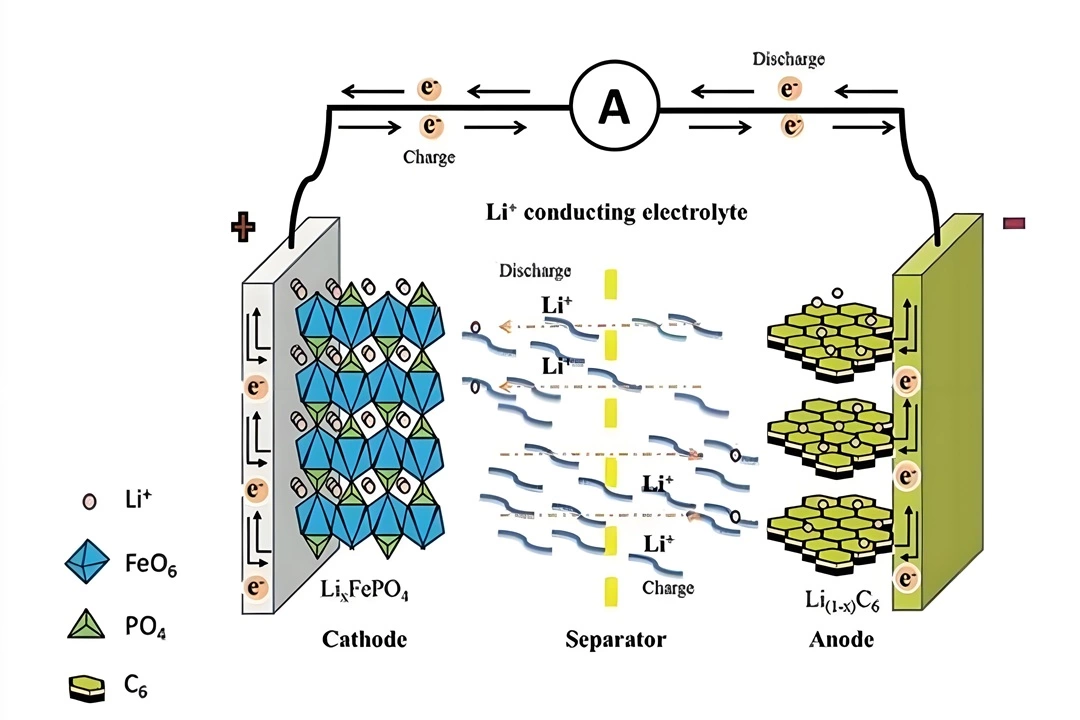
2.How do lithium-ion batteries work
A lithium-ion battery is a rechargeable electrochemical device based on the principle of the conversion of electrical and chemical energy by the insertion and de-insertion of lithium ions (Li +) between positive and negative electrodes.
2.1. Charge process (Li + from positive → negative)
When the battery is charged, an external power supply applies a voltage push:
Lithium ions and electrons are released from the cathode material:
LiCoO2 →Li1-XCoO₂ + xLi+ +Xe-
Lithium ions (Li +) travel through the diaphragm through an electrolyte and migrate to the negative electrode.
Electrons (e⁻) are synchronized to the negative electrode by an external circuit. The negative electrode (such as graphite) is embedded in the lithium ion, forming a LiC₆
xLi++xe-+C6→ LixC6
At this time, the electrical energy is "stored in the negative electrode" to complete the charge
2.2 Discharge process (Li + from negative → positive)
When the battery discharge (power supply) , the direction of electrochemical reaction is reversed:
2.2.1 Lithium atoms in the negative electrode release lithium ions and electrons
2.2.2 Lithium ions return to the positive electrode through the electrolyte
2.2.3 Electrons flow along the outer circuit to the positive terminal, producing a current output
2.2.4 The positive electrode is re-embedded in lithium ion to complete energy release
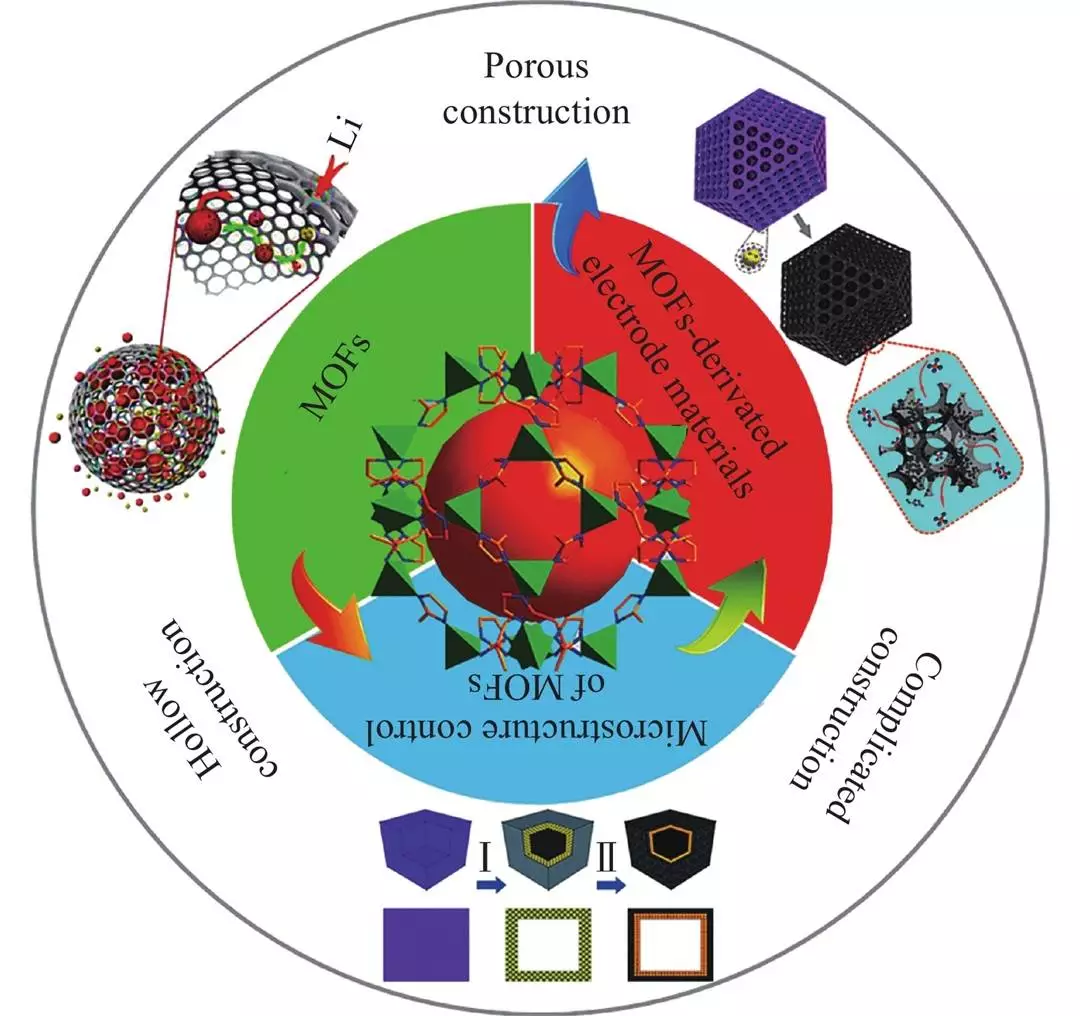
3. Development history of lithium-ion batteries
The development of lithium-ion batteries spans decades, covering multiple stages from theoretical proposals, technological breakthroughs to commercial applications and future technology exploration. The following is its key time nodes and stages of progressTheoretical foundation stage
3.1 1958: American physical chemist Gilbert N. Lewis first proposed the concept of "lithium battery".
Early 1970s: Dr. M.S. Whittingham develops the first lithium metal battery, using a TiS2 positive + lithium metal negative electrode, but it has serious safety problems (short circuit and explosive).
At this stage, although the energy density of lithium metal batteries is high, the safety hazards caused by lithium dendrites are difficult to overcome.
3.1. Lithium-ion battery principle established
1980: Professor John B. Goodenough invented lithium cobalt oxide (LiCoO₂) cathode material, voltage up to 4V, opening the era of high energy batteries.
1985: Dr. Akira Yoshino of Asahi Kasei, Japan, used graphite as a negative electrode material for the first time to develop a "metal-free lithium" lithium-ion battery prototype, greatly improving safety.
1986: Japan begins small-scale trial production of prototype lithium-ion batteries.
Yoshino, known as the "father of lithium-ion batteries," shared the 2019 Nobel Prize in Chemistry with Goodenough and Whittingham.
3.2. Commercialization takes off - SONY launches the world's first commercial lithium-ion battery
1991: Sony of Japan, in partnership with Asahi Kasei, launches the first commercial lithium-ion battery for cameras with high energy density, long life and superior safety.
In the late 1990s, laptops and mobile phones rapidly adopted lithium batteries, which led to an industry explosion.
This marks the official opening of the commercial era of lithium-ion batteries.
3.4. Material innovation and multiple applications
2001: Lithium iron phosphate (LiFePO₄) was developed as a new positive electrode material with improved safety for power and energy storage.
Since 2005: ternary material (NCM/NCA) has been put into industrialization to improve capacity and cycle performance.
2008: Tesla releases the first electric car Roadster, using lithium-ion cylinder battery (18650), electric vehicles into the mainstream vision.
A variety of new materials, cell structures (soft bag, cylinder, square) began to emerge.
3.3. Industry outbreak and energy storage revolution
After 2010: the surge in demand for electric vehicles and home energy storage systems led to the rapid development of the lithium battery market.
2013: BYD launches lithium iron phosphate electric bus.
2015: Tesla releases the Powerwall, a home energy storage system.
2018: Global lithium battery shipments exceeded 100GWh for the first time.
China, South Korea, Japan formed the "lithium battery three strong", CATL, BYD, LG, Samsung SDI and other rapid rise.
3.4. High energy, solid state, new system exploration
After 2020: New systems such as solid-state batteries, silicon-carbon anode, cobalt-free batteries, and sodium-ion batteries are continuously developed
2021: CATL releases sodium-ion battery samples.
2022: BYD launches "blade battery", using LFP to improve safety and space utilization.
2023: Global lithium ion battery shipments exceed 700GWh, and large-scale deployment of energy storage systems accelerates.
Since 2024, large-capacity energy storage power stations and household light storage systems have become the main market.
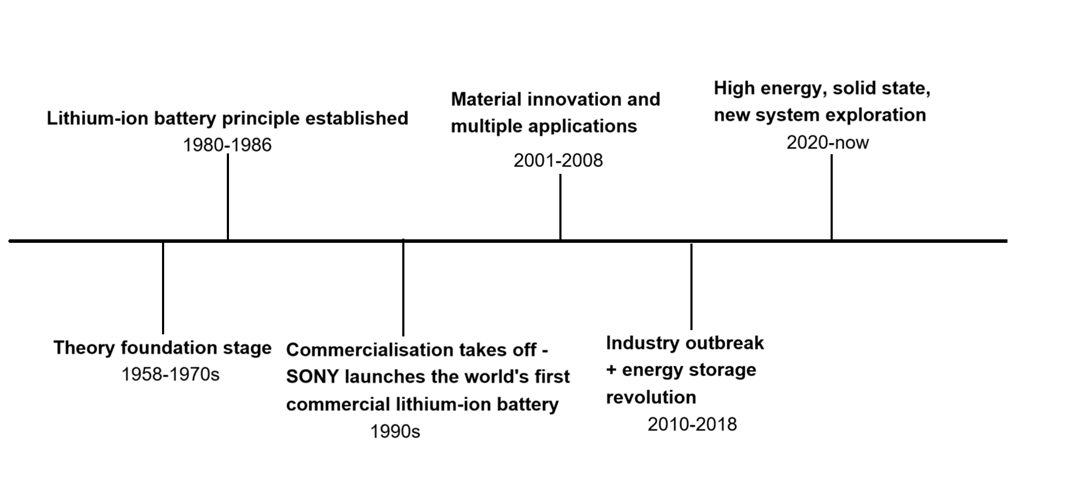
4. Detailed explanation of the main materials of lithium-ion batteries
4.1 Cathode material:
4.1.1 Lithium cobaltate LiCoO₂ : High energy density, often used in mobile phones and other devices
Ternary material NCM/NCA: the mainstream choice for electric vehicles, taking into account energy density and cost
Lithium Iron phosphate LiFePO₄ : Long life, high safety. Suitable for energy storage and household systems
Lithium manganate LiMn₂O₄ : Low cost, but relatively poor life and stability
4.1.2 Anode Material (Anode) :
Graphite: mainstream material, mature and stable
Silicon-carbon (Si-C) composites: Higher energy density, but large volume expansion, need to be controlled
Lithium titanate (LTO) : Extremely long cycle life, suitable for high rate applications
4.1.3 Electrolyte:
Composed of lithium salts (such as LiPF₆) and organic solvents, it conducts lithium ions
Solid-state electrolytes have been developed in recent years to improve safety
4.1.4 Separator:
Most of them are PP/PE microporous films with thermal closing function to prevent short circuit
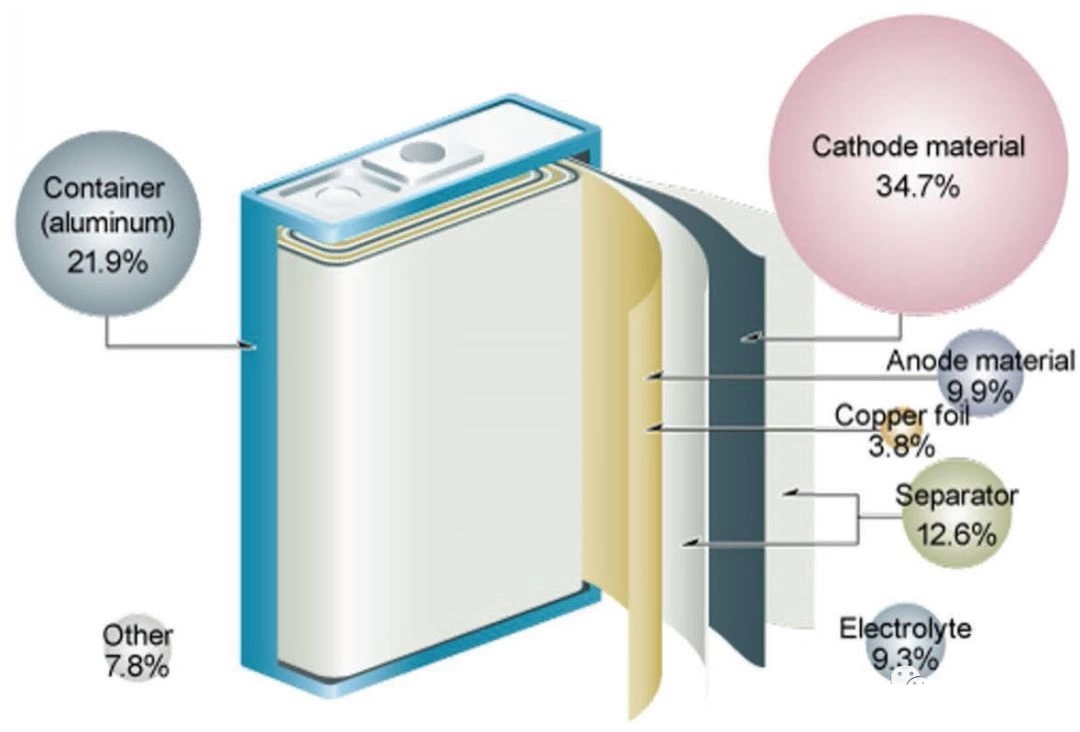
4.2 Lithium iron phosphate battery(LiFePO4) outlook
Lithium iron phosphate battery (LFP) with its high safety, long cycle life and low cost, has become the absolute mainstream technology in the field of energy storage.
4.2.1 Main application scenarios in the energy storage field
Grid side energy storage (generation end + transmission and distribution end).
Peak and frequency modulation: LFP battery response speed up to millisecond, can replace traditional gas turbines, reduce grid fluctuation costs.
Smooth output of renewable energy: supporting photovoltaic/wind power projects to solve intermittency problems (such as 600MWh LFP energy storage power station in Qinghai Province, China).
Black start: provides support for the rapid restoration of power supply after grid failure (such as 182.5MW LFP energy storage system in California, USA).
User side energy storage (Industrial & Commercial + Household)
Peak-valley arbitrage: Industrial and commercial users take advantage of the price difference (such as China's peak-valley price difference exceeding 0.1USD /kWh), and the investment payback period is reduced to 5-7 years.
Standby power supply: Data centers, hospitals and other sensitive scenarios, LFP cycle life of more than 6000 times, reduce the replacement frequency.
Household light storage systems: LFP penetration in the European household storage market increases from 20% in 2020 to 60% in 2023 (Tesla Powerwall 3 fully switches LFP).
4.3 New Application Scenarios
4.3.1 Electric vehicle charging station energy storage: buffer the grid load and support the high-voltage demand of fast charging pile (such as the "optical storage and charging" integrated station cooperated by CATL and Star Charging).
4.3.2 Microgrid and off-grid power supply: Energy independence in remote areas/islands (such as the 50MWh LFP off-grid energy storage project in Tanzania, Africa).
4.4. Core advantages of LFP leading energy storage market
4.4.1 Economical rolling
Kilowatt-hour cost (LCOS) : LFP energy storage system LCOS has been reduced to 0.02-0.04 USD/time, lower than ternary batteries (0.0.045-0.0.06 USD/time) and lead-acid batteries (0.085 USD/time).
Cycle life: 6000 cycles (80% capacity retention rate) vs 3000 cycles for ternary batteries, 500 cycles for lead-acid batteries.
4.4.2 Outstanding Security Performance
Thermal stability: LFP thermal runaway temperature > 500℃, much higher than ternary battery (200℃), through acupuncture, overcharge and other safety tests.
Cobalt-free nickel controversy: circumventing the resource monopoly of cobalt-nickel in ternary materials (Congo cobalt mines account for 70%) and moral hazard (child labor).
Meet the requirements of the energy storage scenario
Low self-discharge rate: monthly self-discharge < 2%, suitable for long-term idle backup power supply scenarios.
Wide temperature range: Stable operation from -30 ° C to 60 ° C through electrolyte formulation optimization (e.g. adding LiFSI).
4.5. Global market pattern and competitive dynamics
Market size and growth
China: New energy storage installed capacity of 21.5GW in 2023, LFP accounted for more than 95%b), 2025 planning target of 60GW.
Europe and the United States: The US IRA bill promotes the increase of energy storage installed capacity by 200% in 2023, and the proportion of LFP rises from 30% to 65%; The LFP penetration rate of the European household storage market exceeds 70%.
Emerging markets: energy storage demand in Southeast Asia and Africa is increasing by 50% annually, and Chinese manufacturers dominate exports.
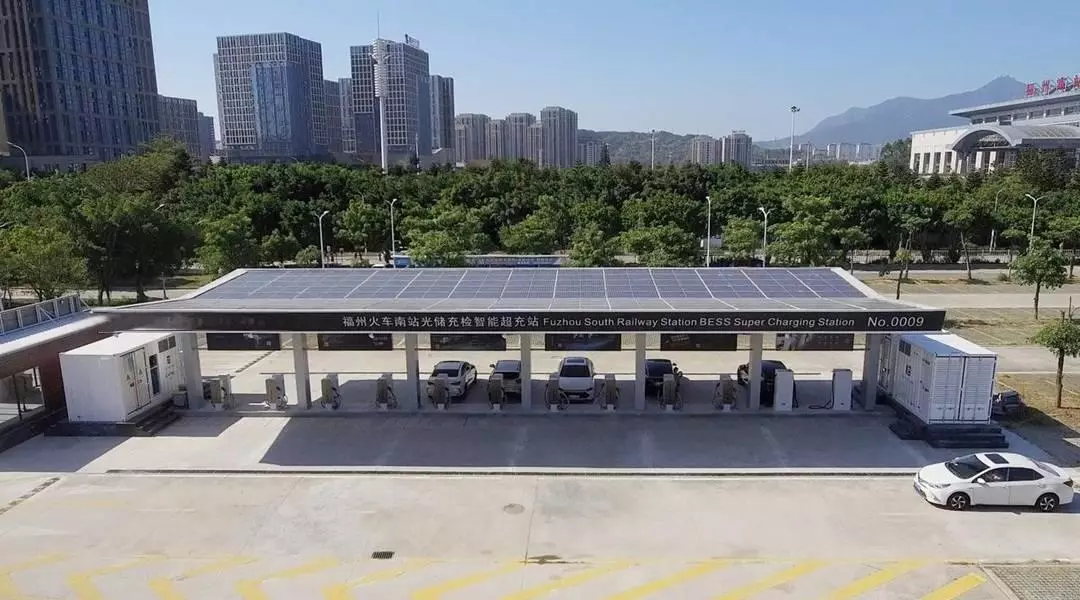
5. Production process of lithium-ion batteries
Lithium battery manufacturing process is strict, mainly including the following five steps:
1. Electrode preparation
Mix: Active material + binder + conductive agent
Coating: The paste is evenly applied to the aluminum/copper foil
Drying: Remove solvent
Compaction: Increase the density and consistency of the pole plate by rolling
2. Battery assembly
Pole cutting and lamination/winding: The core structure is formed according to the cell type
Diaphragm insertion: prevents short circuit
Injection electrolyte
Package sealing: Use aluminum shell, soft package or cylindrical package form
3. Formation and separation
Formation: First charge and discharge to form a stable SEI film
Capacitance: Test the capacity, voltage, internal resistance of each cell, and grade sorting
4. Module/battery pack assembly
Parallel/series configuration: Modules are assembled according to the system voltage and current requirements
Integrated BMS system: Monitor temperature, voltage and current for safe operation
5. Final inspection and delivery
Quality test: including capacity, life, drop, temperature cycle, etc
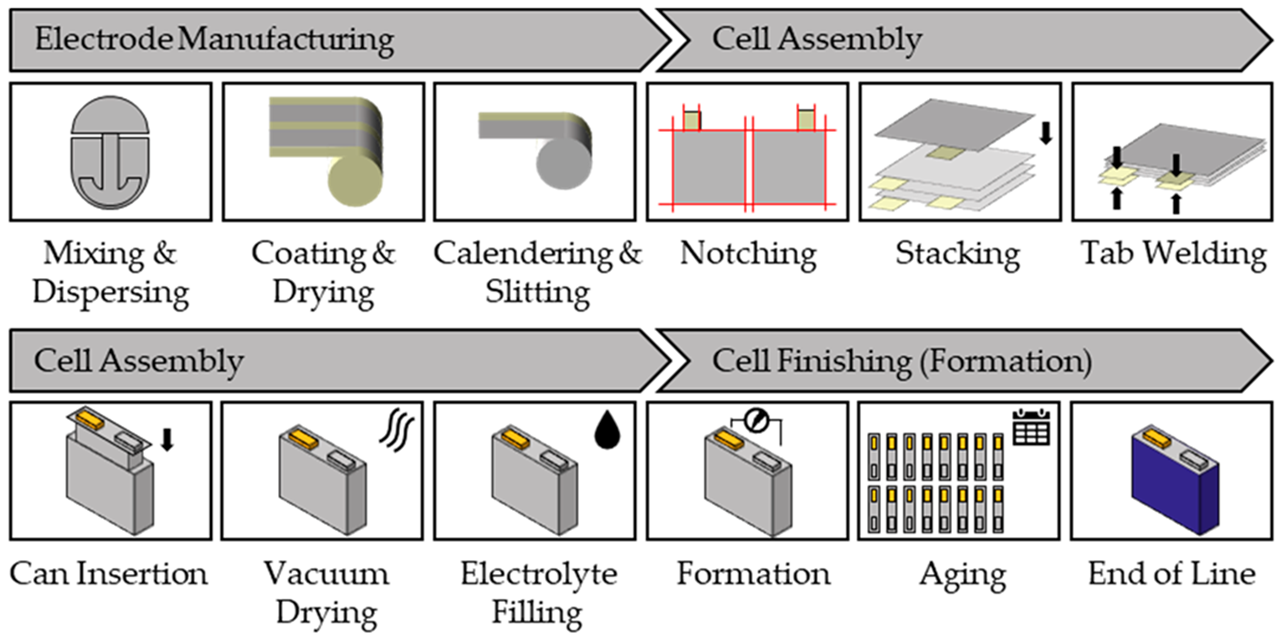
6.Advantages and disadvantages of lithium-ion batteries
Advantages:
1 High energy density: light size, strong power
2 Long life: cycle life can reach more than 2000~6000 times
3. Low self-discharge rate: long-term storage is not easy to lose power
4. No memory effect: It can be used on demand
5. Diversified packaging: suitable for different equipment requirements (soft package, cylinder, square)
Cons:
1. High cost: The price of high-quality lithium raw materials fluctuates greatly
2. Temperature sensitive: Performance declines under high temperature or extremely cold conditions
3. Risk of thermal runaway: Improper design /BMS may cause overheating or fire
4. Strong resource dependence: It is dependent on lithium, cobalt, nickel and other resources

7. Tips for choosing a quality lithium battery manufacturer
7.1 Here are the tips for choosing a good manufacturer
1.Whether customized solutions are supported
2.Have a reliable BMS and EMS control system
3.Whether it has passed authoritative certification (such as UN38.3, CE, IEC62619)
4.Whether there are actual project cases and user word-of-mouth
5.Warranty period and after-sales response speed
6.Meet the application requirements of the energy storage scenario (temperature control system, fire protection system, communication protocol compatibility)
7.2 .Why choose Brovolt energy storage system and lithium ion batteries?
Brovolt is committed to providing safe, intelligent and efficient energy storage solutions to customers around the world. With its leading technology and high-quality services, it has won wide recognition from customers. Here are six reasons why we stand out:
7.1. Support customized solutions
Brovolt provides a full set of energy storage system customization services, which can tailor battery capacity, voltage level, communication protocol, cabinet structure and other parameters according to the specific needs of users, and adapt to various application scenarios such as residential, industrial and commercial, off-grid, microgrid, etc.
7.2. Equipped with advanced BMS and EMS control systems
The system has built-in intelligent battery management system (BMS) and energy management system (EMS) to achieve:
Real-time monitoring and fault warning
Remote control and data cloud platform docking
Energy optimization scheduling to improve system operation efficiency and life
7.3. Passed multiple international authoritative certifications
Brovolt energy storage products have passed the following international standard certifications to ensure global compliance and reliability of products:
UN38.3: Transportation safety certification
CE: EU market access standard
IEC62619: International standard for lithium-ion battery safety
7.4. Real project cases + customer reputation
Brovolt products have been widely used in energy storage projects in Nigeria, Kenya, South Africa and other places, covering home power backup, industrial and commercial peak shaving and valley filling, grid-side energy storage, etc., with good customer feedback and testable project landing capabilities.
7.5. Long warranty period and fast after-sales response
Standard warranty is 5 years, which can be extended to 10 years
Provide a response mechanism within 24 hours, remote diagnosis and technical support
7.6. Fully meet the needs of energy storage application scenarios
Built-in temperature control system (air conditioning/air cooling/liquid cooling) to maintain system stability
Integrated fire protection system (aerosol/smoke detection) to ensure safety
Compatible with mainstream brand inverters, supporting Modbus, RS485, CAN and other protocols
We not only deliver batteries, but also deliver a complete, safe and reliable energy system.Choose Brovolt to light up the green future of every family and enterprise
8.Future trends and market demand of lithium-ion batteries
Lithium battery market demand will continue to grow rapidly, driven by:
1. Renewable energy storage system
2. Electrification of electric vehicles, buses, two-wheelers, etc
3. Universal electricity demand in developing countries (e.g. Africa)
4. Home Energy Independent system (PV + energy storage)
5. New technologies (solid state, sodium ion, electrolyte improvement) continue to advance
According to market forecasts, by 2030, the global annual production capacity of lithium batteries will exceed 5TWh, and energy storage systems will become one of the fastest growing application sectors.
9. Conclusion
Lithium-ion batteries are not only the cornerstone of modern science and technology, but also an important driving force for energy transformation. With technological progress and mass production, it will become safer, more efficient and more economical. For enterprises and individual users, choosing mature lithium battery system manufacturers and solutions will be a key step towards a green energy future.